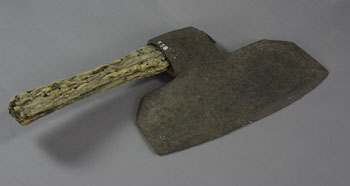Iron Tools and Growing Vegetabless
Over time, the native peoples began demanding iron tools, like axes and fish hooks. Axes were particularly helpful in clearing land, and the fish hooks helped catch more. The iron tools made them more effective farmers, as well. It also meant more elaborate structures could be built. All of this benefitted everyone going full circle when the native peoples began to work for the Americans and Europeans.
Americans and Europeans introduced some vegetables and pigs to the areas where they whaled. Potatoes, cabbage, yams, corn, peas, carrots, peaches, watermelon, and bees and their honey, began to be raised by the native peoples to satisfy the whalers' desire. Potatoes were important, because they contain a chemical that prevented sailors from getting scurvy, a common disease at sea.
Unfortunately, the natives put in the work but the whalers reaped the harvest. Before long, native peoples were growing crops exclusively for export, leaving them less capacity to grow crops for themselves. At first, natives used the new tools for their own building projects. Gradually the tools and skills shifted to building structures for Americans and Europeans in their settlements in New Zealand, Australia, and some of the islands in the South Pacific.

Martha's Vineyard Museum